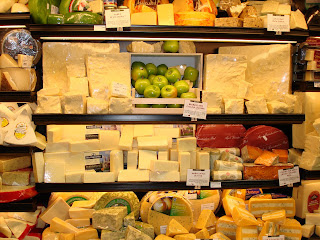It also carries the faint promise of next year – look carefully, and next year’s buds are there, next year’s calves are now mid term in the spring cows’ bellies. I saw the dramatic sight of four young buzzards playing over the hill, joyfully wheeling, swooping, calling to each other: the next generation has left home, and is looking to find a way in the world. Sally from our office, working her dogs with friends saw a troop of wild boar, big males at either end, smaller ones of all sizes processing across the field quite heedless of the watchers.
CROPS - Next year’s wheat crop gets drilled this year, after clean crops if they were clean or after summer fallows or after the maize crop just harvested. We will use the minimum tillage machine, scrabbling the surface, making a little seedbed just enough to nurture each individual seed, and without disturbing the earthworms and all the delicate universe of creatures that live in a well-structured soil. The crops germinate fast in the still-warm soil and the damp soil. Next year lets its presence known as the first shoots come through, a primeval talisman that winter doesn’t win for ever.
GRASS - The autumn flush of grass continues till the frost cools the soil, less growth than the spring but still a useful lift to all the animals, used to pecking out dry summer pasture. Now is the time we grow a little more grass, let the pastures lengthen so grass is there to graze into November and December, when the grass growth slows right down. This is the secret of grazing for 10 or 11 months – not that the grass grows enough all the time that we graze, but that we’ve stored it from now till then. So we measure the grass growth, watch the grass cover increase, plan where the animals graze next and next so that the last fields we graze are the driest underfoot to cause least damage and to extend how long the animals keep out of the barns.
COWS - The spring calving cows are settling into late lactation, less and richer milk. They slow down, progesterone-doped, happy to have you walk amongst them seeing how their backs are rounding out with the rich grass. We ask them to graze tighter to leave clean fields so the spring shoots will be the sweeter and the frost won’t damage the over-wintered leaves. Their milk can be more tricky to make into cheese, so we have our autumn calved cows to balance things up with some earlier lactation milk.
HEIFERS - Enjoy the sight of them in all the fields, as we start bringing first the youngest back to the barns out of the cooler weather, rain and mud. We bring them in in their age groups, and they dash down the road, all hands on deck to get them into the right place, will they treat that flimsy bit of rope as a barrier so they don’t dash off into the woodland – yes, if you keep them moving, shouts of ‘Ho, ho’ and lots of running to head them off in the right direction. We put it off as long as possible as until it gets wet and cold, they do much better outside, but eventually they must come in.
CHEESE - The milk gets more demanding as it gets richer, but it’s the skill of the cheesemaking to have it turn out as world class. The heart of the matter is to make sure it doesn’t get acid too quickly, so it drops its calcium (dry acid cheese) or retains too much moisture – acid fast cheese. You need some acidity to get the front flavour, too much and you get an acid spike to the flavour that is just boring at best or rank and bitter at worst. I have this sense of our flavour: ‘creamy at the front, balanced and complex in the middle, and a long complex finish’ in posh and ‘long, round and nutty’ in my head, so we watch the pasture, the milk solids, the starter, the make and the maturing to get it just so. It’s all work – we had a couple of vats of more acid cheese, and we think perhaps the vats where too big to really work every piece of the curd quite enough, not quite enough cheddaring to keep the acid development under control. Not bad cheese, but not great, so it won’t get sold as Quickes Traditional Mature Cheddar.
PRIZES - I’m really excited that we won the trophy at the Frome Show for the best Farmhouse Mild Cheddar, the best Traditional Mature Cheddar and the mature also won best Traditional Cheddar, as well as a 2nd for Extra Mature and Unpasteurized Cheddar.
At the Great Taste awards our Extra Mature Cheddar and Vintage won 3 Star Golds, the Goats Cheese won a 2 Star Gold and the Mature Cheddar a 1 Star Gold.
At the British Cheese Award we won Gold for Mature Cheddar and Extra Mature Cheddar, Silver for Hard Goats Cheese, Herb Cheddar and Unpasteurized Cheddar, Bronze for Oak Smoked Cheddar, Mild Cheddar and Vintage Cheddar.
RECIPE - Lady Rayner suggested that Quickes Traditional Smoked Cheddar goes beautifully with a ripe Conference pear – just the job for an easy dessert.
MARY QUICKE









































